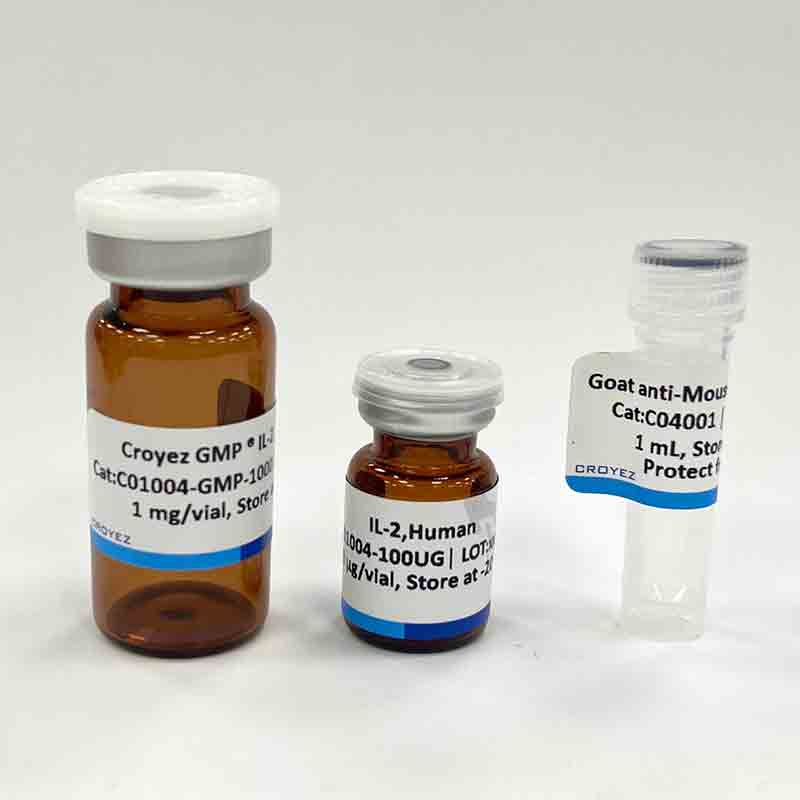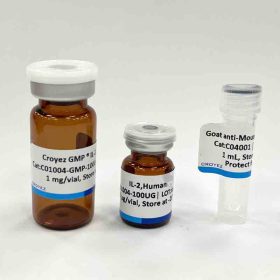The protein encoded by this gene, Chemokine (C-X-C motif) ligand 5 (CXCL5), is a small cytokine belonging to the CXC chemokine family that is also known as epithelial-derived neutrophil-activating peptide 78 (ENA-78). This chemokine is produced concomitantly with interleukin-8 (IL8) in response to stimulation with either interleukin-1 (IL1) or tumor necrosis factor-alpha (TNFA). It is observed that, CXCL5 also expresses in eosinophils, and can interact with the type II interferon IFN-?, thereby cause an inhibition. This chemokine stimulates the chemotaxis of neutrophils possesses angiogenic properties, and elicits these effects by interacting with the cell surface chemokine receptor CXCR2.
Sequence:
VIAATELRCVCLTVTPKINPKLIANLEVIPAGPQCPTVEVIAKLKNQKEVCLDPEAPVIKKIIQKILGSDKKKA with polyhistidine tag at the N-terminus
Source:
Escherichia coli
Endotoxin Test:
<0.1 EU per 1 μg of the protein by the LAL method.
Activity:
Measure by its ability to chemoattract BaF3 cells transfected with human CXCR2. The ED50 for this effect is <100 ng/mL.
Purity:
>98% as determined by SDS-PAGE. Ni-NTA chromatography
Formulation:
The protein was lyophilized from a solution containing 1X PBS, pH 7.4.
Reconstitution:
It is recommended to reconstitute the lyophilized protein in sterile H2O to a concentration not less than 100 μg/mL and incubate the stock solution for at least 20 min to ensure sufficient re-dissolved.
Storage:
Lyophilized protein should be stored at -20°C. Upon reconstitution, protein aliquots should be stored at -20°C or -80°C.
Note:
Please use within one month after protein reconstitution.





